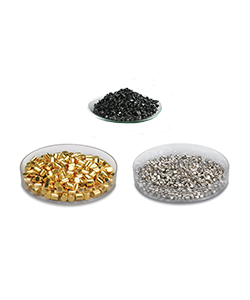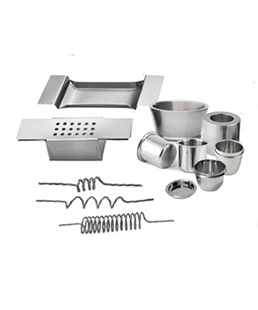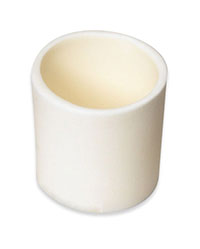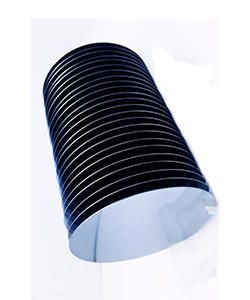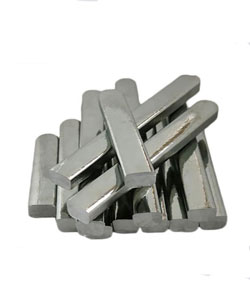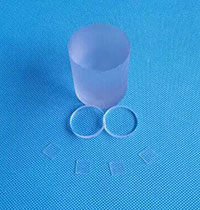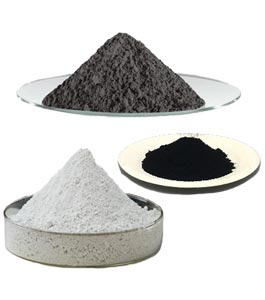 +86-731-89578196
+86-731-89578196
 [email protected]
[email protected]
- Home
- Our Company
-
Products
Sputtering Targets
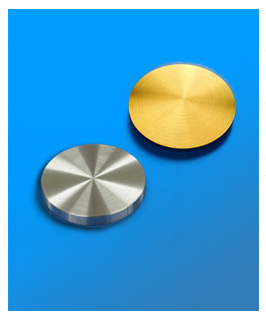
- Industries
- Blog
- FAQ
- Contact Us
The Ultimate Guide to Understanding E-Beam Evaporation for Thin Film Deposition
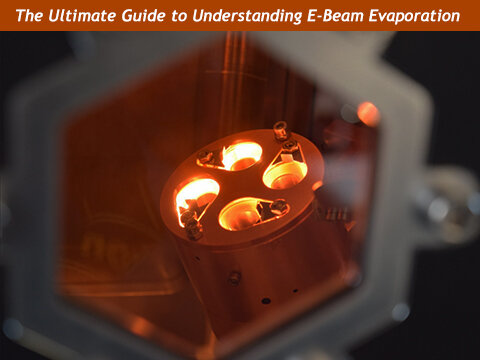
If you work in industries such as electronics or aerospace, you know how important it is to have a proper thin film deposition process. One of the most popular methods for deposition is e-beam evaporation, where an electron beam is used to heat and vaporize a source material.
This material then condenses onto a substrate, creating a thin film. Understanding the intricacies of e-beam evaporation can help you optimize your thin film deposition process, leading to better performance and cost-effectiveness.
In this comprehensive guide, we'll delve into the world of e-beam evaporation, covering everything from the basics to advanced techniques and troubleshooting tips. Whether you're new to thin film deposition or an experienced practitioner looking to refine your skills, this guide has everything you need to take your e-beam evaporation game to the next level. So, let's dive in!
Principles of Thin Film Deposition
Understanding the Fundamentals of Thin Film Deposition Creating a thin layer of material on a substrate is known as thin film deposition. This process is utilized to provide various coatings to different materials, ranging from ceramics to metals.
The thickness of the deposited layer can vary from a few nanometers to several micrometers. Several techniques are involved in thin film deposition, including physical vapor deposition (PVD), chemical vapor deposition (CVD), and others. PVD incorporates methods like sputtering, thermal evaporation, and electron beam (E-Beam) evaporation.
In electron beam evaporation, a high-energy electron beam is utilized to heat and vaporize the source material. After that, the vaporized material gets condensed onto a substrate, thus forming a thin film. To avoid the contamination of the thin film, the process is carried out under high vacuum conditions.
E-Beam Evaporation: Pros and Cons
Compared to other thin film deposition methods, E-beam evaporation has various benefits. For one, it can deposit a wide range of materials, including metals, semiconductors, and insulators. Moreover, it can also handle materials with high melting points like tungsten and molybdenum.
Another advantage of e-beam evaporation is its ability to produce films with high purity and uniformity. This is possible since the process is done under high vacuum conditions, which prevents contamination of the thin film. Additionally, the high-energy electron beam provides precise control over the deposition process, allowing for accurate regulation of the film's thickness.
On the other hand, E-beam evaporation has some downsides. The process has a limited deposition area since the electron beam concentrates on a small spot on the source material. This limitation restricts the size of the thin film that can be deposited. Furthermore, there is a risk of damaging the source material due to the high-energy electron beam. The beam can cause the source material to heat up rapidly, leading to thermal damage and, in some cases, evaporation of the source material.
The E-Beam Evaporation System and Its Components
An E-Beam Evaporation System is comprised of various components, such as the electron gun, crucible, substrate holder, and vacuum chamber.
The electron gun serves as the source of the high-energy electron beam that is used to heat and evaporate the source material. It comprises a cathode, an anode, and a heated filament. By applying a voltage across the cathode and anode, a high-energy electron beam is produced and focused on the source material.
The crucible, on the other hand, is the container that holds the source material. It is made up of a material that can withstand the high temperatures produced during the e-beam evaporation process. Positioned in the path of the electron beam, the crucible allows the beam to heat and evaporate the source material.
The substrate holder is used to hold the substrate where the thin film is deposited. It is positioned in the path of the vaporized material, enabling it to condense onto the substrate. The holder can be rotated or tilted to ensure uniform deposition of the thin film.
Lastly, the vacuum chamber is utilized to create the high vacuum conditions necessary for e-beam evaporation. It is designed to maintain a vacuum pressure of approximately 10^-6 torr to prevent contamination of the thin film.
E-Beam Evaporation Techniques
There are various techniques that can be used for e-beam evaporation, depending on the desired properties of the thin film. One of these techniques is direct deposition, in which the source material is heated and vaporized, and the resulting vapor is then condensed onto the substrate.
Another technique involves using a shutter to regulate the deposition rate. By placing the shutter between the crucible and substrate holder, the amount of vapor that reaches the substrate can be controlled by opening or closing the shutter.
Lastly, co-evaporation can be utilized by vaporizing two or more materials simultaneously to produce a thin film with specific properties, such as alloys and compounds.
Deposition Materials Used in E-Beam Evaporation
E-beam evaporation can be used to deposit a wide range of materials, including metals, semiconductors, and insulators. Some of the commonly used materials include:
- Metals: Gold, silver, copper, titanium, tungsten, and aluminum
- Semiconductors: Silicon, germanium, and gallium arsenide
- Insulators: Silicon dioxide and titanium dioxide
The choice of deposition material depends on the desired properties of the thin film, such as electrical conductivity, optical properties, and mechanical properties.
Factors Affecting E-Beam Evaporation Efficiency
There are various factors that influence the effectiveness of e-beam evaporation, such as the deposition rate, deposition angle, and substrate temperature.
The deposition rate is determined by the electron beam power, the distance between the electron gun and the crucible, and the size of the crucible. Meanwhile, the deposition angle is reliant on the distance between the substrate and crucible, as well as the substrate holder's position.
Moreover, the substrate temperature plays a role in the thin film's adhesion and crystallinity during the deposition process.
Applications of E-Beam Evaporation
Various industries benefit from the applications of E-beam evaporation. It is commonly used in the following industries:
- Electronics:
Thin films of metals and semiconductors are deposited on substrates through E-beam evaporation to produce electronic devices such as transistors, diodes, and integrated circuits.
- Optics:
To create optical components like mirrors, lenses, and filters, E-beam evaporation is used to deposit thin films of metals and dielectrics on substrates.
- Aerospace:
Thin films of metals and ceramics are deposited on substrates using E-beam evaporation to produce components utilized in aerospace applications like satellites and spacecraft.
Comparison with Other Thin Film Deposition Techniques
When it comes to depositing thin films, there are a few techniques available. E-beam evaporation is one of them, and it's known for its capacity to deposit a diverse range of materials and produce high-purity, uniform films.
However, there are other techniques to consider, such as sputtering, thermal evaporation, and chemical vapor deposition. Sputtering, for instance, uses high-energy ions to disperse atoms from a target material, which then collects on a substrate to create a thin film. Thermal evaporation, on the other hand, heats the source material to vaporize it, which then condenses onto a substrate. Finally, chemical vapor deposition involves the reaction of gases to deposit a thin film on a substrate.
Ultimately, the advantages and disadvantages of each technique depend on the specific properties desired of the thin film.
Conclusion
In various industries, e-beam evaporation is a well-known method for thin film deposition. It has numerous benefits, including the capacity to deposit a wide array of materials while creating highly pure and uniform films.
However, it also has some drawbacks, such as limited deposition area and damage potential to the source material. To optimize your thin film deposition process, it's vital to understand the principles of e-beam evaporation and the factors that influence its efficiency. By observing safety protocols and implementing the appropriate techniques, you can obtain top-notch thin films for your desired applications.
AEM Deposition is an international evaporation materials manufacturer. We have over 10 years to produce and sell evaporation materials, including Pure Metal Evaporation Materials, Alloy Evaporation materials, Oxide Evaporation Materials, and Compound Evaporation Materials. If you are interested in AEM Deposition's evaporation materials, you can contact us anytime.





